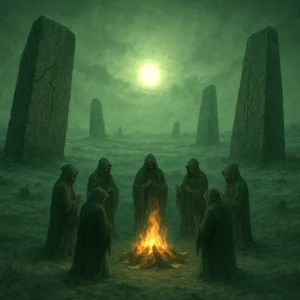Cover art is the term used to describe the visual design of a music album, single, or EP. Cover art can include images, text, logos, symbols, colors, and other elements that represent the musical content, the artist, or the genre of the music. Cover art can also be a form of artistic expression, collaboration, or experimentation, as many musicians have worked with renowned artists, designers, or photographers to create their cover art.
Cover art has a long and fascinating history, spanning from the late 19th century to the present day, and reflecting the changes and trends in music, art, culture, and technology. In this article, we will explore the history and evolution of cover art, from vinyl records to digital streaming, and see how cover art has influenced and been influenced by the music industry and the society.
The Origins of Cover Art: From Shellac to Vinyl
The first recorded sound was made in 1877 by Thomas Edison, who invented the phonograph, a device that could record and play back sound on a cylinder covered with tin foil. However, the sound quality was poor and the cylinders were fragile and expensive. In the late 1880s, Emile Berliner developed the gramophone, a device that could record and play back sound on a flat disc made of zinc and coated with shellac. The discs were more durable and cheaper than the cylinders, and could store more sound. The discs were also easier to mass-produce, and soon became the dominant format for recorded music.
The earliest discs were sold in plain paper or cardboard sleeves, with only the label name, the artist name, and the song title printed on them. The sleeves were mainly used to protect the discs from dust and damage, and had no artistic or aesthetic value. The first attempts to use cover art as a marketing tool were made by some record companies in the early 1900s, who hired illustrators or painters to create colorful and attractive designs for their sleeves. However, these designs were often generic and unrelated to the musical content, and were not widely adopted by the industry.
The first major breakthrough in cover art came in 1938, when Alex Steinweiss, a young graphic designer working for Columbia Records, convinced his boss to let him design the covers for their new line of 33⅓ rpm long-playing (LP) records. Steinweiss argued that the plain sleeves were boring and unappealing, and that a more artistic and eye-catching cover would attract more customers and increase sales. Steinweiss was right: his covers, which featured bold typography, vibrant colors, and abstract or figurative images, were a huge success, and boosted the sales of Columbia Records by over 800%. Steinweiss is widely regarded as the father of modern cover art, and his style influenced many other designers and artists in the following decades.
The LP format, which was introduced by Columbia Records in 1948, allowed for longer playing time and better sound quality than the previous 78 rpm discs, and also provided a larger canvas for cover art. The LP format soon became the standard for recorded music, and cover art became an integral part of the music industry and culture. Cover art became a way to express the musical identity, style, genre, mood, theme, or concept of the album, and to create a visual connection with the audience. Cover art also became a form of artistic collaboration, experimentation, or innovation, as many musicians worked with famous or emerging artists, designers, or photographers to create their cover art. Some examples of iconic and influential cover art from the vinyl era are:
- The Dark Side of the Moon by Pink Floyd (1973), designed by Storm Thorgerson and Aubrey Powell of Hipgnosis, featuring a prism and a rainbow on a black background, symbolizing the band’s light shows and the album’s exploration of human experience.
- Sgt. Pepper’s Lonely Hearts Club Band by The Beatles (1967), designed by Peter Blake and Jann Haworth, featuring a collage of the band and various celebrities, historical figures, and cultural icons, representing the band’s influences and aspirations.
- Nevermind by Nirvana (1991), designed by Robert Fisher, featuring a photo of a baby swimming towards a dollar bill on a fishhook, taken by Kirk Weddle, suggesting the band’s critique of consumerism and capitalism.
- The Velvet Underground & Nico by The Velvet Underground (1967), designed by Andy Warhol, featuring a peelable banana sticker, implying the album’s sexual and drug-related themes.
- Sticky Fingers by The Rolling Stones (1971), designed by Andy Warhol, featuring a photo of a man’s crotch in tight jeans, with a working zipper, implying the album’s sexual and rock’n’roll attitude.
The Rise and Fall of Compact Discs
The compact disc (CD) format was introduced in 1982 by Philips and Sony, as a digital alternative to the analog vinyl records. The CD format offered several advantages over the vinyl format, such as higher sound quality, longer playing time, smaller size, lower cost, and greater durability. The CD format also allowed for new features, such as random access, skipping, rewinding, and fast-forwarding. The CD format soon became the dominant format for recorded music, and vinyl records gradually declined in popularity and production.
The CD format also had an impact on cover art, as the smaller size of the CD cases required a different approach to design. Cover art became more focused on the image and the text, and less on the background and the details. Cover art also became more digital and less analog, as designers used computer software and techniques to create and manipulate images, fonts, colors, and effects. Cover art also became more interactive and multimedia, as some CDs included enhanced content, such as videos, animations, games, or websites. Some examples of notable and innovative cover art from the CD era are:
- OK Computer by Radiohead (1997), designed by Stanley Donwood and Thom Yorke, featuring a collage of distorted images, texts, and symbols, reflecting the album’s dystopian and paranoid themes.
- The Downward Spiral by Nine Inch Nails (1994), designed by Russell Mills and David Buckland, featuring a photo of a blood-stained bathroom, taken by John Balance, suggesting the album’s violent and self-destructive themes.
- Mellon Collie and the Infinite Sadness by The Smashing Pumpkins (1995), designed by John Craig, featuring a painting of a starry night and a woman holding a star, inspired by Georges Méliès’ film A Trip to the Moon, representing the album’s epic and ambitious scope.
- Mezzanine by Massive Attack (1998), designed by Tom Hingston and Robert Del Naja, featuring a photo of a beetle, taken by Nick Knight, implying the album’s dark and organic sound.
- The Miseducation of Lauryn Hill by Lauryn Hill (1998), designed by Kenny Gravillis, featuring a drawing of Lauryn Hill in a classroom, inspired by the cover of Burnin’ by Bob Marley & The Wailers, representing the album’s personal and educational themes.
The Advent and Expansion of Digital Streaming
The digital streaming format was introduced in the late 1990s and early 2000s, by online platforms such as Napster, iTunes, Spotify, and YouTube, as a way to distribute and consume music over the internet. The digital streaming format offered several benefits over the physical formats, such as instant access, unlimited choice, lower price, and greater convenience. The digital streaming format also enabled new forms of music discovery, sharing, and recommendation, as well as new business models and revenue streams for the music industry. The digital streaming format soon became the preferred format for recorded music, and physical formats such as CDs and vinyl records became obsolete or niche.
The digital streaming format also had an effect on cover art, as the online environment and the mobile devices required a different approach to design. Cover art became more simple and minimal, and less complex and elaborate, as designers had to consider the smaller screen size, the lower resolution, and the shorter attention span of the audience. Cover art also became more standardized and uniform, and less diverse and unique, as designers had to follow the guidelines and specifications of the streaming platforms, such as the shape, the size, the format, and the quality of the cover art. Cover art also became more dynamic and adaptive, and less static and fixed, as some streaming platforms allowed for animated, interactive, or personalized cover art. Some examples of interesting and creative cover art from the digital streaming era are:
- DAMN. by Kendrick Lamar (2017), designed by Vlad Sepetov, featuring a photo of Kendrick Lamar in front of a brick wall, with a large red text saying “DAMN.”, creating a striking and simple contrast, and reflecting the album’s raw and direct themes.
- 25 by Adele (2015), designed by Alasdair McLellan, featuring a close-up photo of Adele’s face, with a sepia tone, creating a nostalgic and emotional mood, and reflecting the album’s mature and retrospective themes.
- Random Access Memories by Daft Punk (2013), designed by Peter Franco, featuring a photo of Daft Punk’s helmets forming a star, with a black background, creating a futuristic and mysterious vibe, and reflecting the album’s sci-fi and disco themes.
- Lemonade by Beyoncé (2016), designed by Joe Perez, featuring a photo of Beyoncé with braids and fur, taken by Robin Harper, creating a powerful and fierce image, and reflecting the album’s personal and political themes.
- Coloring Book by Chance the Rapper (2016), designed by Brandon Breaux, featuring a painting of Chance the Rapper with his daughter, creating a colorful and joyful image, and reflecting the album’s gospel and family themes.
These are some of the examples of how cover art has evolved and adapted to the different formats and technologies of recorded music, from vinyl records to digital streaming. Cover art has been and continues to be an important and influential aspect of the music industry and culture, as it can enhance, complement, or contrast the musical content, the artist, or the genre of the music. Cover art can also be a form of artistic expression, collaboration, or experimentation, as many musicians and artists have used cover art as a medium to explore their creativity and vision. Cover art can also be a source of inspiration, admiration, or controversy, as many cover art designs have become iconic, influential, or controversial in the history of music. Cover art is not just a visual representation of music, but a part of music itself.










